Difference between revisions of "Cow leather"
(Created page with "<p align=center> 300px </p> <p align=center> 167px 167px bild:Bulle-01.jpg|...") |
|||
| Line 11: | Line 11: | ||
| − | == | + | ==What is cow leather?== |
| − | + | In the world, there are approximately 1.6 billion cattle including [[Calfskin|calves]], [[Water buffalo leather - Buffalo leather|buffaloes]] and [[Zebu leather|zebus]] (as of 2011). 15 to 25% of these are slaughtered annually. Cow leather is the most widely used leather with about 65 to 70% of [[Leather industry|world production]]. Cow leather is used for [[shoe leather|soles and uppers of shoes]], for [[car leather|car seats]] and [[leather furniture|furniture upholstery]], [[leather belt|belts]] and [[leather straps|straps]], [[leather saddle|saddles]], [[leather clothing]] and much more. There is hardly any area, in which bovine leathers or [[Calfskin|calfskins]] are not processed. | |
| − | In [https://www.youtube.com/watch?v= | + | In [https://www.youtube.com/watch?v=LDmkdFwqTt8&list=PLE1C68DCF3DA8680D Brazil], there are 206 million cattle, which is the world's largest stock of cattle. That is 14.2% of the world's amount (as of 2013). |
| − | In | + | In Italy, by far the largest [[tanning leather|leather manufacturer]] in Europe, almost 100 million square meters of cow leather were produced in 2011. In Germany, the third largest beef leather producer in Europe after Spain, only 8.5 million square meters were produced. |
| Line 27: | Line 27: | ||
| − | + | Since beef is consumed world-wide, sufficient [[Rawhide|raw skins]] are also available for [[leather production]] and the price is therefore affordable. | |
| Line 37: | Line 37: | ||
| − | + | Bovine leather is [[leather quality|stable and firm]] and therefore versatile. The hides are [[Measures and weights|large enough]] to be used for large areas. The surface of a cattle leather skin is about five square meters. For a large [[leather furniture|sofa]], about 25 square meters of leather is needed. Depending on the size of the individual surfaces, the [[leather cutting waste|waste]] is between 30% and 45% and can be even higher for particularly large individual surfaces. However, there are differences between cattle breeds. A Bavarian cow usually yields twice as much skin area as a [[Zebu leather|zebu]]. There are also zebu skins from the company Mastrotto from [https://www.youtube.com/watch?v=LDmkdFwqTt8&list=PLE1C68DCF3DA8680D Brazil] with 5.5 square meters. | |
| Line 48: | Line 48: | ||
| − | + | Cow leather refers to various types of leather from cattle, such as bullhide or cowhide. The differences between species are slight in [[Natural leather grain|grain pattern]] and [[Haptic evaluation of leather surfaces|haptic]]. | |
| − | + | The typical density of a bovine leather skin is between 0.4 and 0.9 g / cm 3. | |
| − | + | The tensile strength of cow leather is between 8 - 25 N / mm². | |
| − | + | Normally, only the surface skin of cattle is processed to [[leather]]. There are rare exceptions, such as the [[bull testicles]] or the [[rumen leather]]. | |
| − | + | Depending on the age ([[calfskin]]), sex (the car industry processes mostly bull leather) and [[Leather weight - Lightweight Leather|weight]] (affects the size of the skin), the [[Rawhide dealers - Skin collectors|rawhide dealers]] stores the skins after the slaughterhouse and sells them to the [[tannery|tanneries]]. | |
| − | + | ||
| − | + | ||
| − | + | ||
| − | + | ||
| − | + | ||
| − | + | ||
| − | + | ||
| − | + | ||
| − | + | ||
| − | + | ||
| − | + | ||
| − | + | ||
| − | + | ||
| − | + | ||
| − | + | ||
| − | + | ||
| − | + | ||
| − | + | ||
| − | + | ||
| − | + | ||
| − | + | ||
| − | + | ||
| − | + | ||
| Line 85: | Line 62: | ||
| − | ==[[ | + | == [[Leather videos|Video]] about leather of different [[exotic leather|animal species]]== |
| − | + | <br> | |
<p align=center> | <p align=center> | ||
| − | <flashow>//www.youtube.com/v/ | + | <flashow>//www.youtube.com/v/JjPr6dqvKDc&fs=1&color1=0x660000&color2=0x550000&border=1|width=500|height=281,25</flashow> |
</p> | </p> | ||
<p align=center> | <p align=center> | ||
| − | ''[[ | + | ''Leather of different animal species. - [[Exotic leather]].'' |
</p> | </p> | ||
== Additional information == | == Additional information == | ||
| − | * [[ | + | * [[Calfskin]] |
| − | * [[Zebu]] | + | * [[Zebu leather]] |
| − | * [[ | + | * [[Cowhide]] |
| − | * [[ | + | * [[Rumen leather]] |
| − | * [[ | + | * [[Bull testicles]] |
| − | * [[ | + | * [[Exotic leather]] |
| − | < | + | <logoplustext /> |
| − | + | ||
| − | + | ||
| − | + | ||
| − | + | ||
| − | + | ||
[[Kategorie:All Articles]] | [[Kategorie:All Articles]] | ||
[[Kategorie:Leather types]] | [[Kategorie:Leather types]] | ||
Revision as of 18:27, 11 February 2017
What is cow leather?
In the world, there are approximately 1.6 billion cattle including calves, buffaloes and zebus (as of 2011). 15 to 25% of these are slaughtered annually. Cow leather is the most widely used leather with about 65 to 70% of world production. Cow leather is used for soles and uppers of shoes, for car seats and furniture upholstery, belts and straps, saddles, leather clothing and much more. There is hardly any area, in which bovine leathers or calfskins are not processed.
In Brazil, there are 206 million cattle, which is the world's largest stock of cattle. That is 14.2% of the world's amount (as of 2013).
In Italy, by far the largest leather manufacturer in Europe, almost 100 million square meters of cow leather were produced in 2011. In Germany, the third largest beef leather producer in Europe after Spain, only 8.5 million square meters were produced.
Since beef is consumed world-wide, sufficient raw skins are also available for leather production and the price is therefore affordable.
Bovine leather is stable and firm and therefore versatile. The hides are large enough to be used for large areas. The surface of a cattle leather skin is about five square meters. For a large sofa, about 25 square meters of leather is needed. Depending on the size of the individual surfaces, the waste is between 30% and 45% and can be even higher for particularly large individual surfaces. However, there are differences between cattle breeds. A Bavarian cow usually yields twice as much skin area as a zebu. There are also zebu skins from the company Mastrotto from Brazil with 5.5 square meters.
Cow leather refers to various types of leather from cattle, such as bullhide or cowhide. The differences between species are slight in grain pattern and haptic.
The typical density of a bovine leather skin is between 0.4 and 0.9 g / cm 3.
The tensile strength of cow leather is between 8 - 25 N / mm².
Normally, only the surface skin of cattle is processed to leather. There are rare exceptions, such as the bull testicles or the rumen leather.
Depending on the age (calfskin), sex (the car industry processes mostly bull leather) and weight (affects the size of the skin), the rawhide dealers stores the skins after the slaughterhouse and sells them to the tanneries.
Video about leather of different animal species
Leather of different animal species. - Exotic leather.
Additional information







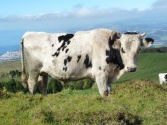
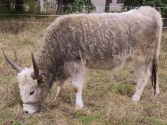
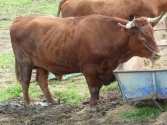




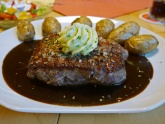
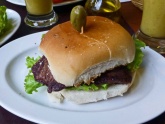
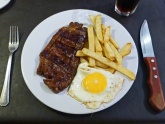





 a kotori web solution
a kotori web solution